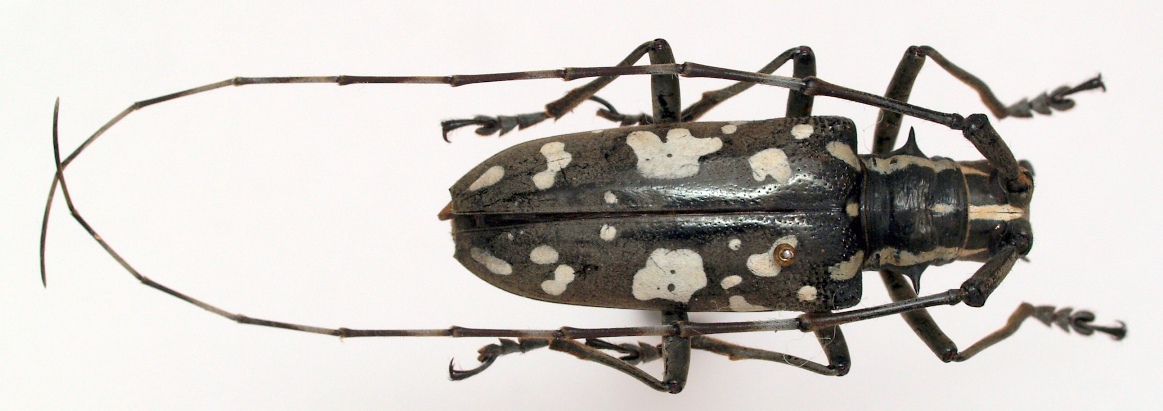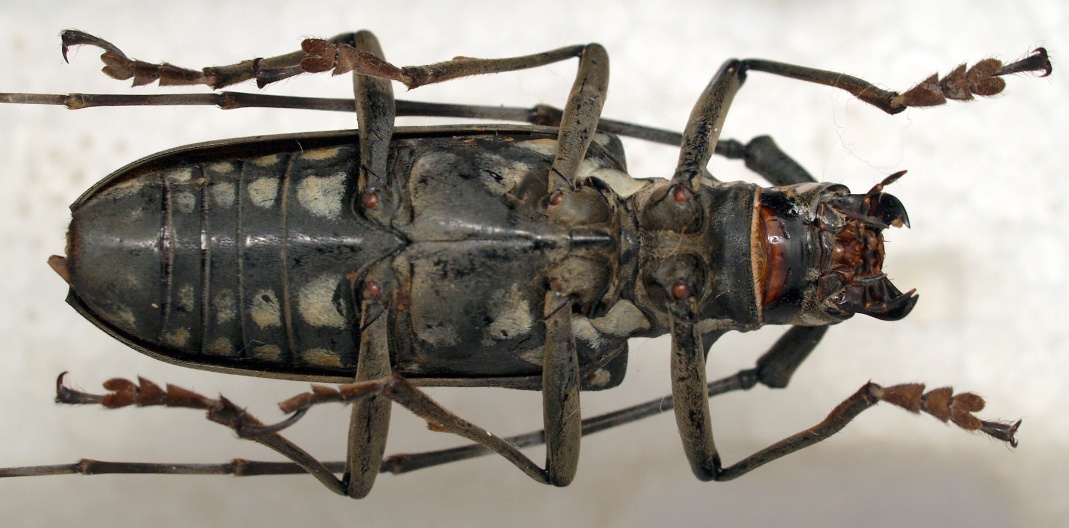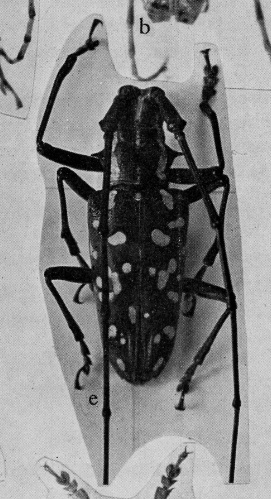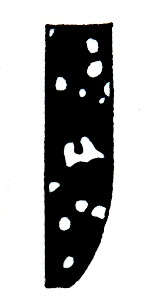| T O P I C R E V I E W |
| Gerard |
Posted - 25/10/2011 : 19:31:28

Laos Mt Phu Phan 2060 m V.2011 taille 30 mm
Un nouveau pour ton site et pour le Web.
Je pense avoir trouvé son nom breuningi (Pic, 1935) qui est donné de Chine; Inde; Laos; Myanmar; Viêt-Nam  |
| 11 L A T E S T R E P L I E S (Newest First) |
| Francesco |
Posted - 31/10/2011 : 18:17:42
Bingo!  |
| Gerard |
Posted - 31/10/2011 : 17:39:35

Good morning here is the view of the sternites which has all smears well. |
| Francesco |
Posted - 31/10/2011 : 07:46:41
mmmhm... all these differences are not a case...
I think it is Parepepeotes albomaculatus (Gahan, 1888), a species known from N. India, Myanmar and Bhutan.
In this species, the discal band of the pronotum is often wanting on the basal half, the elytral spots are larger, the under eyes-lobes are longer than cheeks (as long as in breuningi).
If this corresponds, the abdominal segments should have a row of white spots at each side. |
| Gerard |
Posted - 30/10/2011 : 19:12:18

By chance I have couple. I've put the photo of the male. You can see the variation in the spots.
Thank you very much  |
| Bi |
Posted - 30/10/2011 : 02:11:15
Thanks Francesco,
I'd like to find more specimens in order to grasp the variation range of markings. |
| Francesco |
Posted - 29/10/2011 : 19:18:13
I do not think so, since Breuning wrote the part about Lamiinae of the book of Gressitt & Rondon.
Perhaps they are variations of the same species. Gérard's specimens is a female, this of Gressitt's book is a male, the other in your link another male... |
| Bi |
Posted - 29/10/2011 : 12:27:39

Dear Francesco
Yet, my knowledge about P. breuningi is only from the article about Laos fauna 1970.
The character from the figured one fits Gerard's well.
But, as you say, that two point do not match the original description.
So, maybe Gressitt misidentified the Laos species? |
| Francesco |
Posted - 29/10/2011 : 09:52:04

The picture Breuning (1944: 216) provided for Parepepeotes breuningi is at the side.
There are two problems.
Firstly, the pronotum should have a median longitudinal band, which seems incomplete in your specimen while it is well developed in the linked one.
Secondly, the elytral pattern seems to have smaller spots; the discal one is bilobed; the basal one is missing or far form the base; the apical one is rounded.
Such pattern seems to better fit with the linked specimen than with yours. |
| Gerard |
Posted - 28/10/2011 : 17:45:47
Thank you two.
I lack of documentation for sliced. |
| Bi |
Posted - 28/10/2011 : 02:07:05
I think the one Gerard posted was real Parepepeotes breuningi, and the one in Francesco's link once I identify as P. breuningi from southwest Yunnan and southeast Tibet maybe a sibling species.
I wish some day I can compare it with the topotype from Tonkin for identity. |
| Francesco |
Posted - 25/10/2011 : 21:55:06
Merci beaucoup!
Pourtant je ne suis pas trop sûr qu'il soit breuningi: ici il y a un exemplaire qui ne me semble pas la même espèce... |


